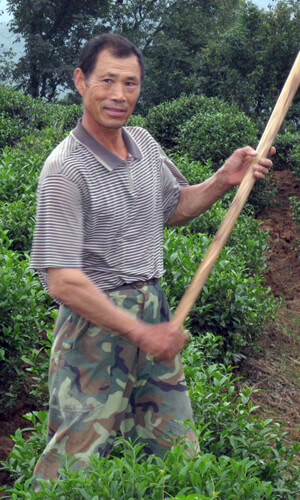92
pi lo chun
based on 656 reviews
Save time by automating shipments of your best-selling teas. Pause or cancel anytime.
Please select size:
Please select size:
LOOSE LEAF TEA
sample
makes 10 cups
$4
Looking for Business pricing?
Shopping for yourself?
please consider our retail website.
Pi Lo Chun in bulk available for wholesale. Green tea from the Fujian province of China. Pi Lo Chun (sometimes written biluochun) translates as 'green snail spring' a reference to this tea's distinctive spiral-shaped leaves. It is produced in the short span of time between the Spring Equinox (end of March) and Clear Brightness (early April). Our 'Choral Pi Lo Chun' tea is made from the finest tender buds, gathered and processed exclusively by hand. The cup has an umami note, and usually hints of whispering white grape-type fruitiness.
This tea contains a moderate level of caffeine | Steep at 180° for 2-3 minutes.
Customer Reviews (656)

Fresh From Origin
The history of tea is long and storied. One story you may not know however, is how Pi Lo Chun got its original name, "scary fragrance". Legend goes, when a tea picker ran out of room in her basket, she tucked the extra leaves in her bosom instead. When the tea warmed from her body heat, it started to give off its fragrance and startled her. The tea has shaken off its spookier origins and now goes by Pi Lo Chun, or "green snail spring", and comes in seven grades: Supreme, Supreme I, Grade I, Grade II, Grade III, Chao Qing I, and Chao Qing II.Meet our pi lo chun farmer, Huang Jian Lin
To ensure the best quality and value, we import our teas directly from the countries in which they are grown, working closely with the farmers who tender them. Our Roots Campaign connects our customers with the rich stories and the farmers behind some of our most popular teas.
How long have you been growing tea and what got you started?
“At the age of 20 I began to work in tea area. My hometown is a tea area, everybody loves tea. So I also start to do tea which is my first and only job till now.”
Can you describe a typical day out in the field?
“I go out at about 8am in the morning. It is the best time to pick up tea leaves. But the picking season for the tender pi luo chun is very short. Only in early spring. So the rest of the time I will help for production and do some weeding in the afternoon.”
What is your favorite part of growing tea?
“I like to see the pi luo chun after production at last. I love the fresh green looking and pleasant aroma of this tea. I do enjoy it after hard work..”
